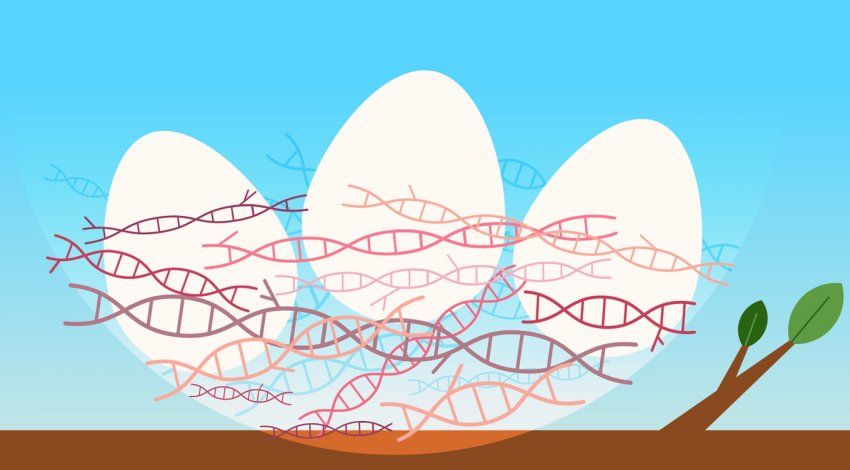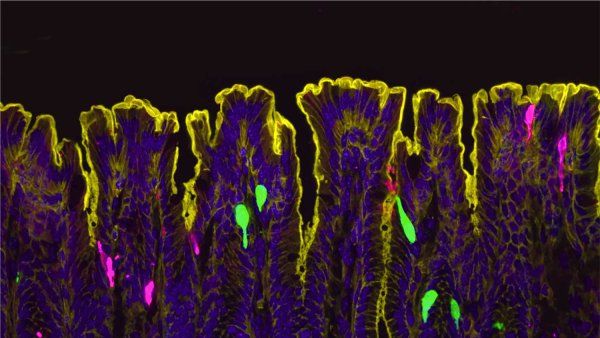If you’re looking for science-based, judgment-free intel, a lot of sexual health stories leave something to be desired. Cosmopolitan has decided on “10 Sex Things Every Woman Should Do.” Every woman – got that? No exceptions! And if you really want to feel bad about yourself, Maxim claims to know “Exactly How Much Sex You Should Have, According to Your Age.” Spoiler alert: It’s more than some of us are having.
This is not that kind of story. Instead, we asked UC San Francisco experts about the sexual health topics they find intriguing or surprising or just flat-out misunderstood by most people. What we discovered isn’t always sexy, at least not in a headline-grabbing sense. But you might learn something new. That’s hot, right?
Adolescence
Not Quite What It Used to Be

Not so long ago, standard sexual health education didn’t cover much: puberty, reproduction, pregnancy prevention, maybe some infections.
Today, sex ed has expanded. Many teenagers now learn about a host of related topics, such as gender identity, sexual orientation, consent, and the basics of healthy relationships. And they’re having a lot less sex. In 1991, 54% of American high schoolers reported having intercourse; as of 2019, that proportion had dropped to just 38%.
Adolescents are getting more of the information they need to make decisions about their own lives and bodies. And when they do have sex, they’re more likely to use contraception. The birth rate among teenagers in 2018 was less than half what it was in 2008.
But access to more data doesn’t necessarily make sexual development easy for today’s adolescents, according to Erica Anderson, PhD, a psychologist at UCSF’s Child and Adolescent Gender Center. While gender identity is distinct from sexual orientation, Anderson thinks many teenagers struggle to peel these topics apart.
“There’s much more chatter among young people about exploring identities,” says Anderson, who is transgender herself. “There’s also a lot of confusion in individual kids.”
Most of her clients try on gender identity and sexual orientation labels well before they try flirting or dating or having sex. That’s fine, Anderson says, but it also means many young people now explore their sexual identities almost exclusively online. She’s encountered clients as young as 11 who declare they’re asexual, a classification she considers premature.
“It’s almost like sexuality, and even gender identity, is an abstraction for this generation,” Anderson says. “But sexuality is a biopsychosocial experience. You can’t just excise out any physical experience.
“I worry kids may be trying to compartmentalize themselves. Many girls do this. Before they know it, the gaze of older males comes upon them, and they’re creeped out. They don’t know what to do with that. Sometimes it’s easier for them to not be sexual.”
Many teenagers are also embracing gender terms that defy strict definition. A few UCSF experts have noticed a rise in youths identifying as gender-nonconforming, non-binary, or gender queer. Annesa Flentje, PhD, the director of UCSF’s Center for Sexual and Gender Minority Health, says that’s a healthy shift.
My teenage son said to me in the car today, ‘Did you know that all of my friends are LGBTQ? Everyone is now.’ In a sense, that means people don’t have to be subject to prescribed gender roles. It’s pulling people out of boxes.”
“My teenage son said to me in the car today, ‘Did you know that all of my friends are LGBTQ?’” Flentje says. “He’s like, ‘Everyone is now.’ In a sense, that means people don’t have to be subject to prescribed gender roles. It’s pulling people out of boxes.”
In Anderson’s view, young people sometimes conflate gender identity (your internal concept of yourself as male, female, a mix, or neither) with gender expression (your external look and behavior, which may or may not conform to traditional expectations).
“Can someone be female and be very aggressive, a trait we often associate with males? Yes, of course,” Anderson says. “The categories are much more a continuum than mutually exclusive choices. And it’s fine to change. Teenagers go through phases.”
Still, Anderson underscores that identity development is idiosyncratic. She also works with transgender teenagers who know who they are and what they want. When teens are “insistent, consistent, and persistent,” Anderson supports medical treatment for gender dysphoria.
Whether her clients are discussing their gender or their sexuality, Anderson says, “it’s generally a good idea to be accepting of a young person. I never tell a kid who they are. But sometimes I say, ‘Be kind to yourself. You may change your view. And when in doubt, doubt. It’s okay. You’ve got time.’”
Not so long ago, standard sexual health education didn’t cover much: puberty, reproduction, pregnancy prevention, maybe some infections.
Today, sex ed has expanded. Many teenagers now learn about a host of related topics, such as gender identity, sexual orientation, consent, and the basics of healthy relationships. And they’re having a lot less sex. In 1991, 54% of American high schoolers reported having intercourse; as of 2019, that proportion had dropped to just 38%.
Adolescents are getting more of the information they need to make decisions about their own lives and bodies. And when they do have sex, they’re more likely to use contraception. The birth rate among teenagers in 2018 was less than half what it was in 2008.
But access to more data doesn’t necessarily make sexual development easy for today’s adolescents, according to Erica Anderson, PhD, a psychologist at UCSF’s Child and Adolescent Gender Center. While gender identity is distinct from sexual orientation, Anderson thinks many teenagers struggle to peel these topics apart.
“There’s much more chatter among young people about exploring identities,” says Anderson, who is transgender herself. “There’s also a lot of confusion in individual kids.”
Most of her clients try on gender identity and sexual orientation labels well before they try flirting or dating or having sex. That’s fine, Anderson says, but it also means many young people now explore their sexual identities almost exclusively online. She’s encountered clients as young as 11 who declare they’re asexual, a classification she considers premature.
“It’s almost like sexuality, and even gender identity, is an abstraction for this generation,” Anderson says. “But sexuality is a biopsychosocial experience. You can’t just excise out any physical experience.
“I worry kids may be trying to compartmentalize themselves. Many girls do this. Before they know it, the gaze of older males comes upon them, and they’re creeped out. They don’t know what to do with that. Sometimes it’s easier for them to not be sexual.”
Many teenagers are also embracing gender terms that defy strict definition. A few UCSF experts have noticed a rise in youths identifying as gender-nonconforming, non-binary, or gender queer. Annesa Flentje, PhD, the director of UCSF’s Center for Sexual and Gender Minority Health, says that’s a healthy shift.
My teenage son said to me in the car today, ‘Did you know that all of my friends are LGBTQ? Everyone is now.’ In a sense, that means people don’t have to be subject to prescribed gender roles. It’s pulling people out of boxes.”
“My teenage son said to me in the car today, ‘Did you know that all of my friends are LGBTQ?’” Flentje says. “He’s like, ‘Everyone is now.’ In a sense, that means people don’t have to be subject to prescribed gender roles. It’s pulling people out of boxes.”
In Anderson’s view, young people sometimes conflate gender identity (your internal concept of yourself as male, female, a mix, or neither) with gender expression (your external look and behavior, which may or may not conform to traditional expectations).
“Can someone be female and be very aggressive, a trait we often associate with males? Yes, of course,” Anderson says. “The categories are much more a continuum than mutually exclusive choices. And it’s fine to change. Teenagers go through phases.”
Still, Anderson underscores that identity development is idiosyncratic. She also works with transgender teenagers who know who they are and what they want. When teens are “insistent, consistent, and persistent,” Anderson supports medical treatment for gender dysphoria.
Gender dysphoria: a sense of unease that some people experience because of a mismatch between their biological sex and their gender identity.
Whether her clients are discussing their gender or their sexuality, Anderson says, “it’s generally a good idea to be accepting of a young person. I never tell a kid who they are. But sometimes I say, ‘Be kind to yourself. You may change your view. And when in doubt, doubt. It’s okay. You’ve got time.’”
Shame
The Enemy of Sexual Health

One theme popped up again and again in UCSF interviews about sexual health: shame.
Take, for example, sexual health education. Mara Decker, DrPH, MHS, an assistant professor at UCSF’s Institute for Health Policy Studies, thinks sex ed has gotten a lot better in some places – like California, where she evaluates the state’s program. But historically, sex ed has often been delivered with a finger-wagging tone that smacks of scared-straight campaigns against drugs.
“It’s not ‘You’re doomed if you do this’ anymore,” says Decker. “Ironically, by not shaming, we’re actually seeing some young people become less sexually active. They feel like they have a little bit more power over their own decisions.”
Decker says most public health research has found shaming to be counterproductive, whether the goal is to reduce sexually transmitted infections or decrease drug use. That’s likely because of how lousy shame can feel to those on the receiving end. Research links it to depression and anxiety, and people prone to shame often have low self-esteem.
“Shaming dialogue just completely turns people off,” Decker says. “They stop listening. Instead of saying things like ‘Gonorrhea is horrible, and it’s a sign that you’re a horrible person,’ which it’s not, we’re expressing ‘This is gonorrhea. These are the symptoms.’”
A lot of people feel shame for wanting or having sex. But what if you’re not having sex? Or you have zero desire for it? Is that bad?
It’s such a common concern that Tami Rowen, MD ’09, MS ’07, an associate professor of obstetrics, gynecology, and reproductive sciences, brought it up before dispensing any advice about ways to improve sexual function. Despite what other magazines might tell you, a low sex drive isn’t a problem unless you’re bothered by it. And if you are? That’s okay, too! There is no wrong answer.
“Sexual desire is so variable,” Rowen says. “And there’s this stereotype that women’s sexual desire is not innate and that it’s only responsive, and that’s just not true.”
Meanwhile, men are often acutely ashamed of low sexual desire, according to Alan Shindel, MD, MAS, a professor of urology. Their partners’ expectations – real or projected – can make matters worse.
“There’s a cultural paradigm that men are supposed to want sex all the time,” he says. “But it’s not realistic.
And it’s always been a bit of a dance in terms of two people coming together and getting their libidos to mesh. The secret sauce is communication.”
“And it’s always a bit of a dance in terms of two people coming together and getting their libidos to mesh. The secret sauce is communication. It’s shocking how often couples don’t talk about sex.”
Shame can also have unique effects on the sex lives of LGBTQ people. Flentje studies “minority stress,” which includes feelings of shame.
“People have faulty internalized beliefs about some supposed heterosexual ‘ideal,’” Flentje says. “Those beliefs can get in the way of not just healthy sexual functioning but also healthy psychological functioning.”
Harmful beliefs surface in different ways. Some LGBTQ people suppress their sexual desires; others use alcohol or drugs before sex to mute negative thoughts. To help, Flentje is testing whether cognitive-behavioral therapy can reduce minority stress.
“They may have developed an unhealthy habit as a 17-year-old of getting really intoxicated before sex,” she says. “But that habit is just a habit. There may not be a place for it anymore.
“What are the thoughts behind it? Maybe they’re not valid. We can have automatic thoughts that stem from what was once a core belief, like ‘Being queer is not okay.’”
These kinds of beliefs have deep roots in messages we receive during our formative years – whether from family, peers, religion, or American culture at large. But how do you challenge a stubborn belief?
Flentje recommends shifting perspective. For example, try applying the belief to someone you love. It’s not a conversation, but a thought exercise: How would you feel if someone spoke to that person the way you’re speaking to yourself? Most people are much kinder to others, Flentje says, than they are to themselves.
One theme popped up again and again in UCSF interviews about sexual health: shame.
Take, for example, sexual health education. Mara Decker, DrPH, MHS, an assistant professor at UCSF’s Institute for Health Policy Studies, thinks sex ed has gotten a lot better in some places – like California, where she evaluates the state’s program. But historically, sex ed has often been delivered with a finger-wagging tone that smacks of scared-straight campaigns against drugs.
“It’s not ‘You’re doomed if you do this’ anymore,” says Decker. “Ironically, by not shaming, we’re actually seeing some young people become less sexually active. They feel like they have a little bit more power over their own decisions.”
Decker says most public health research has found shaming to be counterproductive, whether the goal is to reduce sexually transmitted infections or decrease drug use. That’s likely because of how lousy shame can feel to those on the receiving end. Research links it to depression and anxiety, and people prone to shame often have low self-esteem.
“Shaming dialogue just completely turns people off,” Decker says. “They stop listening. Instead of saying things like ‘Gonorrhea is horrible, and it’s a sign that you’re a horrible person,’ which it’s not, we’re expressing ‘This is gonorrhea. These are the symptoms.’”
Not sure how to talk with your kids about relationships, reproduction, and other sexual health topics? Decker recommends the evidence-based advice at talkwithyourkids.org
A lot of people feel shame for wanting or having sex. But what if you’re not having sex? Or you have zero desire for it? Is that bad?
It’s such a common concern that Tami Rowen, MD ’09, MS ’07, an associate professor of obstetrics, gynecology, and reproductive sciences, brought it up before dispensing any advice about ways to improve sexual function. Despite what other magazines might tell you, a low sex drive isn’t a problem unless you’re bothered by it. And if you are? That’s okay, too! There is no wrong answer.
“Sexual desire is so variable,” Rowen says. “And there’s this stereotype that women’s sexual desire is not innate and that it’s only responsive, and that’s just not true.”
Meanwhile, men are often acutely ashamed of low sexual desire, according to Alan Shindel, MD, MAS, a professor of urology. Their partners’ expectations – real or projected – can make matters worse.
“There’s a cultural paradigm that men are supposed to want sex all the time,” he says. “But it’s not realistic.
And it’s always been a bit of a dance in terms of two people coming together and getting their libidos to mesh. The secret sauce is communication.”
“And it’s always a bit of a dance in terms of two people coming together and getting their libidos to mesh. The secret sauce is communication. It’s shocking how often couples don’t talk about sex.”
If you want guidance from a sex therapist, several UCSF experts recommend Come as You Are: The Surprising New Science that Will Transform Your Sex Life. Author Emily Nagoski covers a wide range of topics – from the science of pleasure to body shame to recovery from sexual trauma – with a voice that’s anything but judgmental. (The title of the introduction: “Yes, You Are Normal.”)
Shame can also have unique effects on the sex lives of LGBTQ people. Flentje studies “minority stress,” which includes feelings of shame.
“People have faulty internalized beliefs about some supposed heterosexual ‘ideal,’” Flentje says. “Those beliefs can get in the way of not just healthy sexual functioning but also healthy psychological functioning.”
Harmful beliefs surface in different ways. Some LGBTQ people suppress their sexual desires; others use alcohol or drugs before sex to mute negative thoughts. To help, Flentje is testing whether cognitive-behavioral therapy can reduce minority stress.
“They may have developed an unhealthy habit as a 17-year-old of getting really intoxicated before sex,” she says. “But that habit is just a habit. There may not be a place for it anymore.
“What are the thoughts behind it? Maybe they’re not valid. We can have automatic thoughts that stem from what was once a core belief, like ‘Being queer is not okay.’”
These kinds of beliefs have deep roots in messages we receive during our formative years – whether from family, peers, religion, or American culture at large. But how do you challenge a stubborn belief?
Flentje recommends shifting perspective. For example, try applying the belief to someone you love. It’s not a conversation, but a thought exercise: How would you feel if someone spoke to that person the way you’re speaking to yourself? Most people are much kinder to others, Flentje says, than they are to themselves.
Hormones
They Can Mess with Your Relationship

Sex hormones like estrogen and testosterone have a profound influence on our bodies. That influence extends to our brains and, to some extent, how we think, feel, and act. The result is the premise of pretty much every romantic comedy ever made: Sometimes men and women confound each other.
That’s why Louann Brizendine, MD, UCSF’s Benioff Professor of Psychiatry, writes about the neuroscience of hormones and how they shape our romantic and sexual relationships. She focuses on heteronormative partners – there aren’t many studies of other identities and pairings yet – but Brizendine’s books are immensely popular.
“The male and female brain are much more alike than they are different,” Brizendine says. “But our different hormones are specified by nature to make behavior differences. It’s probably not politically correct to say this, but it is biologically correct.
“I’m making some generalizations here, but it’s so you can step out of yourself and say, ‘Okay, now I understand there might be biology behind this.’ Otherwise, people start to blame themselves or others.”
Biological differences can show up in sexual relationships in many ways. One example: If popular dating shows like FBoy Island are any indicator, a lot of straight women struggle to sort men who want a relationship from men who just want sex. Brizendine believes hormones are behind this dilemma. Women might be prone to rapid attachment to an attractive partner because of oxytocin, a feel-good bonding hormone. Intimacy, cuddling, and sex can unleash it in anyone, but the extra estrogen and progesterone in female bodies encourage their brains to ratchet up their oxytocin, especially when they ovulate. Compared to women, men may need two to three times more touch to maintain the same level of oxytocin.
Did someone ever hold your hand, and you instantly felt the gesture meant something super meaningful? You might be right. It could also be a surge of chemicals that feels fantastic but essentially means “your judgment is toast,” according to Brizendine. For many women, it’s biologically difficult to not crave commitment after sex with someone they really like.
“Biology is destiny unless you know what it’s doing to you,” Brizendine says. “We often don’t know anything about who we’re dating. Having ways to assess trustworthiness quickly is imperative. This is a situation in which you have to outsmart your own hormones.”
Monogamy-minded women can do this in a few ways, Brizendine says. If you track your cycle, avoid scheduling hot dates on the days around ovulation. When you do meet up, consider what matters most to you in a partner. For example, does your date really listen to you – or wait for his turn to speak? Delaying sex can also help keep that oxytocin under control – and weed out dates who just want to hook up.
Meanwhile, Brizendine says testosterone does make sexual conquest a priority for many men, especially during adolescence. But research also suggests that social conditioning pressures men to evade emotion and hide it away – which might make close relationships difficult for some men to initiate or maintain.
“From childhood on, males learn that acting cool and hiding their fears are the unwritten laws of masculinity,” Brizendine writes.
That said, Brizendine argues that some gender stereotypes – on average, women are more emotionally adept, men more rational – are backed by neuroscience.
Foreplay for a man is basically everything that happens 24 seconds before sex. For a woman, it’s everything that happens 24 hours before.”
“The differences are important to understand because they help reset your expectations,” Brizendine says. “Women may be fast on the uptake of emotional nuance. What a woman would get in one conversation, it may take him three. It takes patience.”
Likewise, Brizendine recommends that men practice patience with female experiences they don’t instinctively understand. A common one: For many women, feeling physical pleasure requires turning off the fear and anxiety center of the brain. Stress can profoundly inhibit arousal and ability to orgasm for females – hence, the conventional advice for men to dial up the intimacy and take it easy. Make time to talk. Go out for dinner. Hold those hands! (Okay, not hands necessarily. Any welcome touch helps light the oxytocin fire.)
“Foreplay for a man is basically everything that happens 24 seconds before sex,” Brizendine says. “For a woman, it’s everything that happens 24 hours before.”
Sex hormones like estrogen and testosterone have a profound influence on our bodies. That influence extends to our brains and, to some extent, how we think, feel, and act. The result is the premise of pretty much every romantic comedy ever made: Sometimes men and women confound each other.
That’s why Louann Brizendine, MD, UCSF’s Benioff Professor of Psychiatry, writes about the neuroscience of hormones and how they shape our romantic and sexual relationships. She focuses on heteronormative partners – there aren’t many studies of other identities and pairings yet – but Brizendine’s books are immensely popular.
One of Brizendine’s books, The Female Brain, became a New York Times bestseller. Comedian Whitney Cummings even adapted it into a movie.
“The male and female brain are much more alike than they are different,” Brizendine says. “But our different hormones are specified by nature to make behavior differences. It’s probably not politically correct to say this, but it is biologically correct.
“I’m making some generalizations here, but it’s so you can step out of yourself and say, ‘Okay, now I understand there might be biology behind this.’ Otherwise, people start to blame themselves or others.”
Biological differences can show up in sexual relationships in many ways. One example: If popular dating shows like FBoy Island are any indicator, a lot of straight women struggle to sort men who want a relationship from men who just want sex. Brizendine believes hormones are behind this dilemma. Women might be prone to rapid attachment to an attractive partner because of oxytocin, a feel-good bonding hormone. Intimacy, cuddling, and sex can unleash it in anyone, but the extra estrogen and progesterone in female bodies encourage their brains to ratchet up their oxytocin, especially when they ovulate. Compared to women, men may need two to three times more touch to maintain the same level of oxytocin.
Did someone ever hold your hand, and you instantly felt the gesture meant something super meaningful? You might be right. It could also be a surge of chemicals that feels fantastic but essentially means “your judgment is toast,” according to Brizendine. For many women, it’s biologically difficult to not crave commitment after sex with someone they really like.
“Biology is destiny unless you know what it’s doing to you,” Brizendine says. “We often don’t know anything about who we’re dating. Having ways to assess trustworthiness quickly is imperative. This is a situation in which you have to outsmart your own hormones.”
Monogamy-minded women can do this in a few ways, Brizendine says. If you track your cycle, avoid scheduling hot dates on the days around ovulation. When you do meet up, consider what matters most to you in a partner. For example, does your date really listen to you – or wait for his turn to speak? Delaying sex can also help keep that oxytocin under control – and weed out dates who just want to hook up.
Meanwhile, Brizendine says testosterone does make sexual conquest a priority for many men, especially during adolescence. But research also suggests that social conditioning pressures men to evade emotion and hide it away – which might make close relationships difficult for some men to initiate or maintain.
“From childhood on, males learn that acting cool and hiding their fears are the unwritten laws of masculinity,” Brizendine writes.
That said, Brizendine argues that some gender stereotypes – on average, women are more emotionally adept, men more rational – are backed by neuroscience.
Foreplay for a man is basically everything that happens 24 seconds before sex. For a woman, it’s everything that happens 24 hours before.”
“The differences are important to understand because they help reset your expectations,” Brizendine says. “Women may be fast on the uptake of emotional nuance. What a woman would get in one conversation, it may take him three. It takes patience.”
Likewise, Brizendine recommends that men practice patience with female experiences they don’t instinctively understand. A common one: For many women, feeling physical pleasure requires turning off the fear and anxiety center of the brain. Stress can profoundly inhibit arousal and ability to orgasm for females – hence, the conventional advice for men to dial up the intimacy and take it easy. Make time to talk. Go out for dinner. Hold those hands! (Okay, not hands necessarily. Any welcome touch helps light the oxytocin fire.)
“Foreplay for a man is basically everything that happens 24 seconds before sex,” Brizendine says. “For a woman, it’s everything that happens 24 hours before.”
Sexual Function
Troubleshooting the Genitals

While much of sexual health is psychological, it’s also very much about the body. Let’s get into the physical stuff!
First up: female anatomy and orgasm. For a long time, scientists knew surprisingly little about the clitoris. This organ holds thousands of nerves that give women sexual pleasure. It’s shaped kind of like a wishbone, and it’s bigger than you might think.
“We don’t see the majority of the clitoral tissue,” Rowen says. “It’s deep, and it wraps around the vagina.”
Does that mean vaginal orgasms and clitoral orgasms – the latter once deemed inferior by some male physicians – are actually the same? Rowen says scientists aren’t studying this enough to know for sure. She suspects female orgasms involving vaginal penetration engage more muscles and thus cause different sensations, even though the nerves involved are probably similar. What we know for sure is that most women need external clitoral stimulation to achieve any orgasm.
A lot of young women come to me and say, ‘I may have orgasmic dysfunction’ because their partners are like, ‘My last three partners had orgasms from intercourse. There’s something wrong with you.’ No, there’s not.”
“People don’t understand this,” Rowen says. “A lot of young women come to me and say, ‘I may have orgasmic dysfunction,’ because their partners are like, ‘My last three partners had orgasms from intercourse. There’s something wrong with you.’ No, there’s not.”
Unfortunately, a lot can throw off women’s enjoyment of sex. Some women taking hormonal birth control find their sex drive plummets; Rowen blames that on the high dose of hormones required to stop ovulation. And as women age, menopause can cause a host of unpleasant symptoms, including vaginal dryness and lower libido. Luckily, Rowen says, the progesterone and estrogen used in hormone replacement therapy are far less potent than those in the pill, so they don’t dampen desire.
Women looking to boost their libidos have some relatively new prescription options. One is Addyi, a drug originally investigated as an antidepressant. (Note to women already on an antidepressant: A lot of them actually curb sexual desire. That applies to men, too.) While there’s been some controversy about how well Addyi works, Rowen says most of her patients who try the daily pill decide to keep taking it.
There’s also Vyleesi, which indirectly affects dopamine, a neurotransmitter that stokes our pursuit of pleasure. You’re supposed to inject it under your skin – yep, with a needle – about 45 minutes before sex. On the plus side, you find out whether it works quickly, whereas Addyi can take weeks to kick in.
And what about men? There are well-established options to help them get or keep an erection. You’ve probably heard of Viagra, one of the most popular prescriptions in the U.S. It boosts blood flow to the penis.
But Shindel notes that the ability to get an erection is not always the problem. Some men just have low libido, which might be more mental and emotional than physical. Still, the problem can get worse over time.
“The analogy is, ‘Who wants to play baseball if you know you’re going to strike out?’” says Shindel. “They don’t want to fail. That becomes a vicious cycle.
“But the pills work in many cases to help boost erection response, regardless of arousal or libido. A lot of men get some confidence back. That is psychological, but real.”
Among older men, surgery or radiation for prostate cancer can damage nerves and make erections especially difficult. If nothing else helps, surgeons like Benjamin Breyer, MD, MAS ’11, a professor of urology, can implant a device in the penis. When the patient wants an erection, he just pumps a small bulb in his scrotum – ta-da, science! Other promising (but still experimental) solutions include shock wave and stem cell therapies.
“We see a lot of men in their 50s and 60s,” Breyer says. “That’s one of the more gratifying things in our work – helping restore men to how they had been before their cancer. For a lot of people, it helps them feel more normal.”
Still, Breyer thinks everyone should know there are far less invasive ways to improve their sexual function.
“Whatever is good for you overall is also good for sexual health: exercise, eating well, getting rest, destressing,” he says. “Mental health, hormonal health, vascular health ... all these things intersect and lead to sexual wellness.”
Stock Photos: crayons: Light Field Studios; drooping flower: EasyBuy4u; origami: Kseniia Ivanova/Mandrixta; calla lilies: Floortje
While much of sexual health is psychological, it’s also very much about the body. Let’s get into the physical stuff!
First up: female anatomy and orgasm. For a long time, scientists knew surprisingly little about the clitoris. This organ holds thousands of nerves that give women sexual pleasure. It’s shaped kind of like a wishbone, and it’s bigger than you might think.
“We don’t see the majority of the clitoral tissue,” Rowen says. “It’s deep, and it wraps around the vagina.”
Does that mean vaginal orgasms and clitoral orgasms – the latter once deemed inferior by some male physicians – are actually the same? Rowen says scientists aren’t studying this enough to know for sure. She suspects female orgasms involving vaginal penetration engage more muscles and thus cause different sensations, even though the nerves involved are probably similar. What we know for sure is that most women need external clitoral stimulation to achieve any orgasm.
A lot of young women come to me and say, ‘I may have orgasmic dysfunction’ because their partners are like, ‘My last three partners had orgasms from intercourse. There’s something wrong with you.’ No, there’s not.”
“People don’t understand this,” Rowen says. “A lot of young women come to me and say, ‘I may have orgasmic dysfunction,’ because their partners are like, ‘My last three partners had orgasms from intercourse. There’s something wrong with you.’ No, there’s not.”
Unfortunately, a lot can throw off women’s enjoyment of sex. Some women taking hormonal birth control find their sex drive plummets; Rowen blames that on the high dose of hormones required to stop ovulation. And as women age, menopause can cause a host of unpleasant symptoms, including vaginal dryness and lower libido. Luckily, Rowen says, the progesterone and estrogen used in hormone replacement therapy are far less potent than those in the pill, so they don’t dampen desire.
Curious about how menopause can impact women’s lives – sexually or otherwise? Brizendine’s latest book, The Upgrade: How the Female Brain Gets Stronger and Better in Midlife and Beyond, comes out in April.
Women looking to boost their libidos have some relatively new prescription options. One is Addyi, a drug originally investigated as an antidepressant. (Note to women already on an antidepressant: A lot of them actually curb sexual desire. That applies to men, too.) While there’s been some controversy about how well Addyi works, Rowen says most of her patients who try the daily pill decide to keep taking it.
There’s also Vyleesi, which indirectly affects dopamine, a neurotransmitter that stokes our pursuit of pleasure. You’re supposed to inject it under your skin – yep, with a needle – about 45 minutes before sex. On the plus side, you find out whether it works quickly, whereas Addyi can take weeks to kick in.
And what about men? There are well-established options to help them get or keep an erection. You’ve probably heard of Viagra, one of the most popular prescriptions in the U.S. It boosts blood flow to the penis.
Tom Lue, MD, UCSF’s Tanagho Professor of Clinical Urology, discovered how the body traps blood in the penis during an erection and advanced our understanding of nitric oxide, which is crucial to how Viagra and similar drugs work.
But Shindel notes that the ability to get an erection is not always the problem. Some men just have low libido, which might be more mental and emotional than physical. Still, the problem can get worse over time.
“The analogy is, ‘Who wants to play baseball if you know you’re going to strike out?’” says Shindel. “They don’t want to fail. That becomes a vicious cycle.
“But the pills work in many cases to help boost erection response, regardless of arousal or libido. A lot of men get some confidence back. That is psychological, but real.”
Among older men, surgery or radiation for prostate cancer can damage nerves and make erections especially difficult. If nothing else helps, surgeons like Benjamin Breyer, MD, MAS ’11, a professor of urology, can implant a device in the penis. When the patient wants an erection, he just pumps a small bulb in his scrotum – ta-da, science! Other promising (but still experimental) solutions include shock wave and stem cell therapies.
“We see a lot of men in their 50s and 60s,” Breyer says. “That’s one of the more gratifying things in our work – helping restore men to how they had been before their cancer. For a lot of people, it helps them feel more normal.”
Still, Breyer thinks everyone should know there are far less invasive ways to improve their sexual function.
“Whatever is good for you overall is also good for sexual health: exercise, eating well, getting rest, destressing,” he says. “Mental health, hormonal health, vascular health ... all these things intersect and lead to sexual wellness.”
Stock Photos: crayons: Light Field Studios; drooping flower: EasyBuy4u; origami: Kseniia Ivanova/Mandrixta; calla lilies: Floortje





